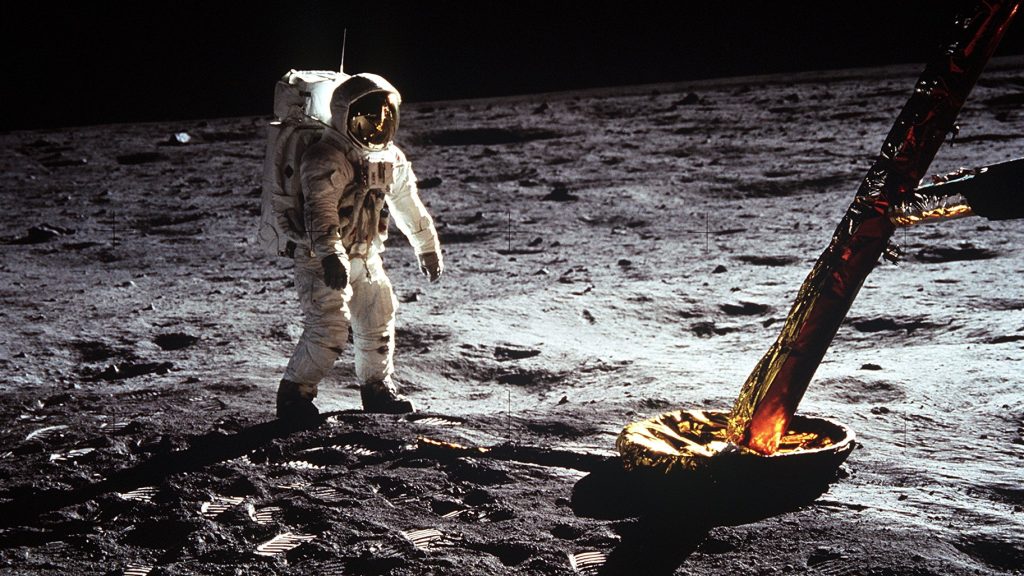I’m not old enough to remember the first moon landing in July 1969, but I’m pretty sure that my parents were among the millions upon millions of enthralled Americans who watched Neil Armstrong take that first “small step for man, one giant leap for mankind.” And as a science-y, tech-y kid I was, of course, interested in the space program.
Science-y, tech-y kids grow up to be science-y, tech-y adults, so naturally, I kept an eye on the February 22 lunar landing of the Odysseus. The landing was a bit marred when, upon touchdown, the spacecraft toppled onto its side. But most of its capabilities remain operational, and so far the mission is considered a success: the first American vehicle to make it to the moon since the Apollo program ended with Apollo 17, which landed in December 1972.
upon touchdown, the spacecraft toppled onto its side. But most of its capabilities remain operational, and so far the mission is considered a success: the first American vehicle to make it to the moon since the Apollo program ended with Apollo 17, which landed in December 1972.
Unlike the Apollo missions, the latest moon landing is largely private. The Odysseus is from Intuitive Machines, a Texas company that runs a commercial lunar program, and it was launched from a Space X rocket.
Still, NASA has played a key role, and the Odysseus carries six NASA instruments.
During the journey to the Moon, NASA instruments measured the quantity of cryogenic engine fuel as it has been used, and while descending toward the lunar surface, teams collected data on plume-surface interactions and tested precision landing technologies. (Source: NASA)
Once the craft landed, the NASA instruments were used for:
…investigating lunar surface interactions and radio astronomy. The Odysseus lander also carries a retroreflector array that will contribute to a network of location markers on the Moon for communication and navigation for future autonomous navigation technologies.
The NASA instruments included their Navigation Doppler Lidar for Precise Velocity and Range Sensing (NDL) guidance system. This technology plays a critical role with respect to descent and landing. And when, just prior to landing, Intuitive Machines experienced a problem with their navigation system, they “leaned on NASA’s guidance system for an assist to precisely land.”
NASA’s instrument operates on the same principles of radar and uses pulses from a laser emitted through three optical telescopes. It measures speed, direction, and altitude with high precision during descent and touchdown.
The other technologies are an experimental device for autonomous navigation; a reflector array for “precision laser ranging;” another demonstration technology – this one a radio frequency mass gauge that will help monitor fuel usage; an instrument that uses radio frequencies “to determine how natural and human-generated activity near the surface interacts with and could interfere with science conducted there;” and stereo cameras to take images that show how the lunar surface is impacted by “the spacecraft’s engine plume during and after descent.”
The NASA technology deployed on the current lunar landing will help with future NASA programs that will send astronauts to the moon looking for water and other resources.
Over time, the technologies developed by NASA end up contributing to civilian products as well.
One of these is close to the Critical Link heart: CMOS technology used in digital imaging applications, and the technology that’s behind cell phone cameras.
NASA technology has also made its way into home air purifiers, “space age” Speedo racing swimsuits, food safety processes, cordless power tools, GPS, CAT scans, Nike’s Air sneakers, dust busters, the jaws of life, memory foam, scratch-resistant lenses…
Who knows what benefits the NASA and other technology used in the current lunar effort will yield down the road. I’m looking forward to finding out, but in the meantime, I’m glad that, after 50 years, we’re back on the moon.
—————————————————————————————–
Information used in this post also came from: NASA 60 Years and Counting, and the Jet Propulsion Lab. Source for the image: History.com.
